Info |
The Judd Sash Fastener was a type of sash lock that was produced for 65 years, although its peak period of popularity was during the 1870s and 1880s. Of the many types of sash locks patented in the mid-nineteenth century, the Judd sash fastener was the most popular. It was the first successful sash fastener that regulated the operation of the lower sash by locking it to the upper sash rather than locking a sash stile as had been common prior to this time. Throughout its long time in production, the design of the Judd sash fastener changed on several occasions. The Judd sash fastener is often confused with the quadrant fastener.
The Judd sash fastener was invented by Morton Judd (1808-1901) of New Britain, Connecticut. His 1847 patent (#5279, below) was the first successful sash lock. The original version of the sash lock had a rectangular base that was attached to the upper sash and a plate with a rounded flange attached to the lower sash. An arm attached to the base could swing 180 degrees over the plate; the arm was held in place by a spring. The spring was intended to hold the arm in tension, but the design was altered within a few years without the spring.
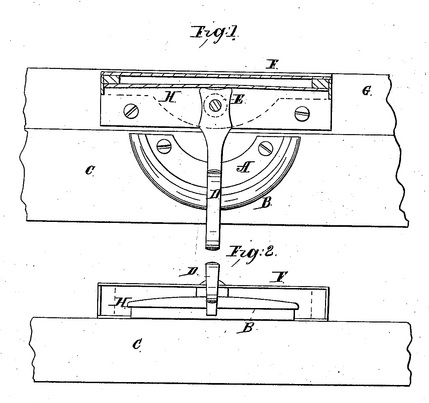
Illustration of the first type of Judd Sash Fastener from the 1847 patent.
Judd renewed his patent in 1863. His second design (see below) placed the spring inside a casing at the base of the moveable arm. By this time, the base had been simplified in design. The shape of the arm is quite distinctive and remained in occasional use in Judd sash fasteners throughout the remainder of the century.
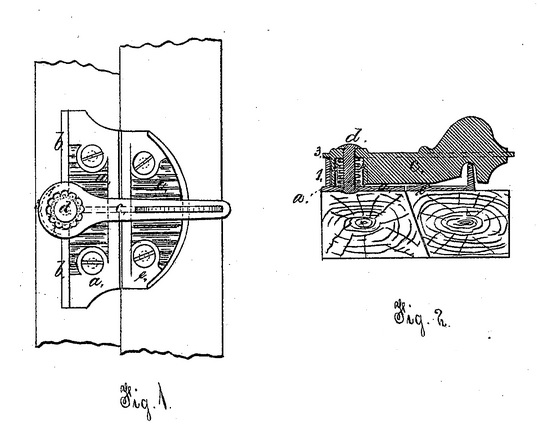
Illustration of the second phase of the Judd Sash Fastener from its 1863 patent renewal.
By the late 1860s, the Judd sash fastener was being produced with design variants. The end of the moveable arm featured a small porcelain knob, a metal knob, or the original tabbed design, and these three options remained in production into the twentieth century. The Sargent hardware catalog of 1869 showed that the base had reverted to Judd's original 1847 design. Below is an example of this phase of the Judd sash fastener; this particular design remained in production until 1911.
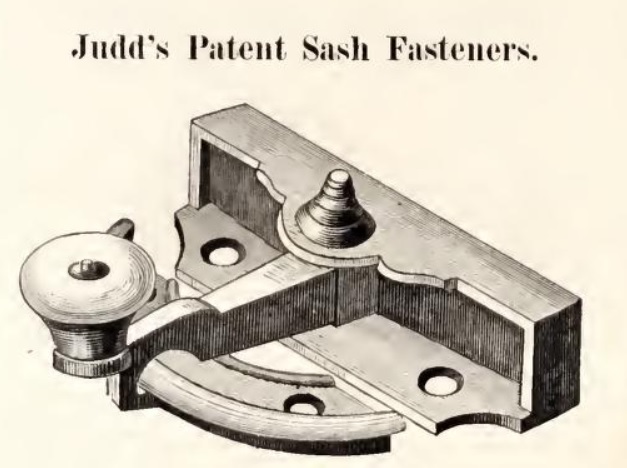
Illustration of the second phase of the Judd Sash Fastener with a porcelain knob (Sargent hardware catalog 1869, page 100).
An interesting but short-lived design was produced in the very late 1860s and early 1870s. These Judd sash fasteners were designed with a two-part base in the shape of a shallow pan, with the arm attached to one side. This sub-type appears in hardware catalogs only from 1869 to 1874. The outer terminus of the arm had the usual three options (tab, porcelain knob, or metal knob).
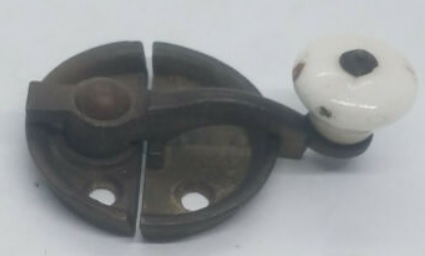
Illustration of the pan subset of Judd Sash Fasteners with a porcelain knob.
During the quarter century between 1874 and 1899, a multitude of types of decoration were applied to Judd sash fasteners. During these years, the base was mostly rectangular in shape. The rotating arms sometimes had the knob or tab attached onto the very end, as shown below, while in other cases the knob or tab was located above the pendant. Some hardware companies added a hook onto the end of the pendant that wrapped around a second small flange on the plate; this small hook gave the impression of additional security. The use of a metal knob atop the pivot end of the arm was common in the 1870s but last appears in the Strelinger catalog of 1880.
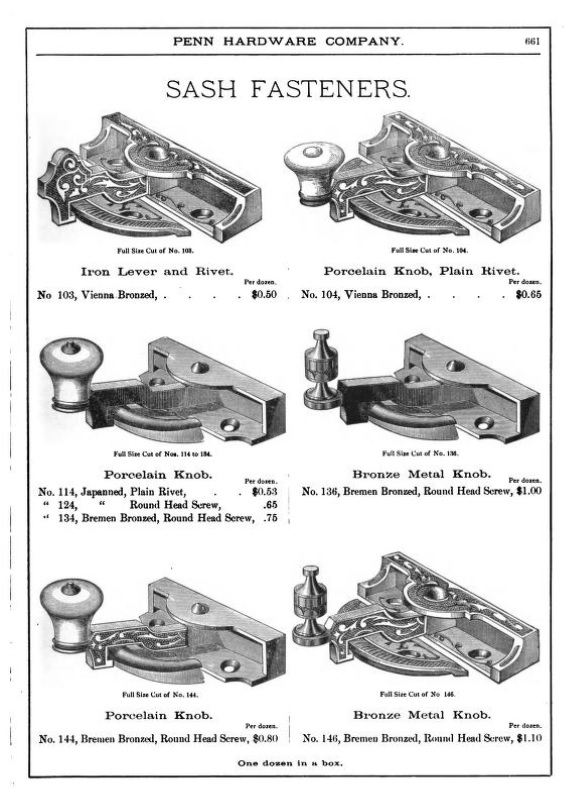
Some of the varieties of Judd Sash Fasteners offered in the Penn hardware catalog of 1892 (page 661). |




